Aug 14, 2025
Author:Amanda Lyu
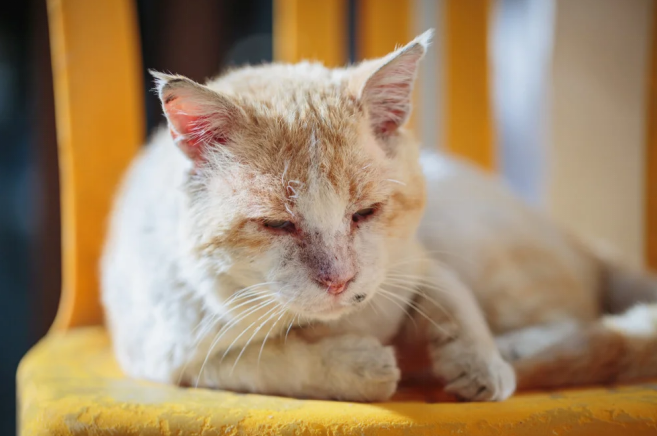
As a cat parent, there is nothing more painful than hearing that your cat may have cancer. Feline squamous cell carcinoma (SCC) is one of the more frequent forms in cats. It is a form of skin cancer in cats and may have a severe impact on their comfort and quality of life. One can easily overlook it. SCC tends to go under the radar until it is relatively late, which is why it is important to detect it as early as possible.
In this guide, we will guide you through what SCC is, its causes, symptoms, and available treatment options.
By being more aware of the issue and having professional advice, you will be more prepared to take on the challenge of feline squamous cell carcinoma.
SCC is a cancerous condition that occurs on the external part of the skin of your cat. It is quite widespread; approximately 1 out of 4 feline skin cancers is SCC. This cancer tends to appear in areas that have less fur and receive more sunlight, such as the ears, nose, or eyelids. It may also be observed in the mouth or around the claws sometimes.
The best thing you can do is to learn what to look out for so you can detect it early.
SCC doesn’t always look the same. It depends upon where it is located:
● Skin SCC: It is the most widespread one. Occurs on sun-exposed parts like noses and ears. It can look like an unhealing sore.
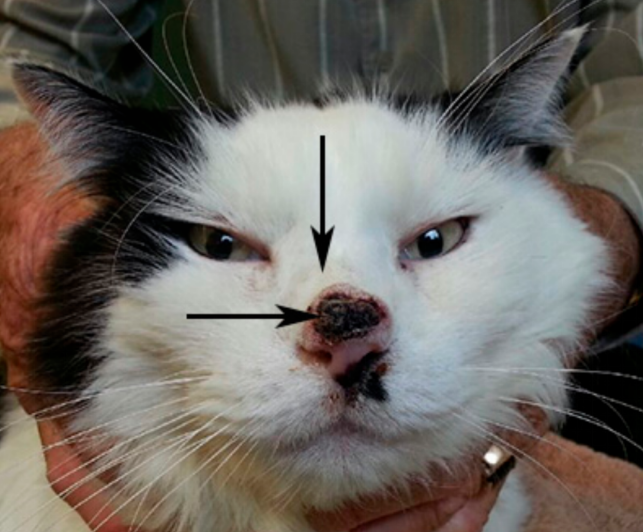
● Oral SCC: It is found in the mouth. This can make eating hard or painful for your cat.
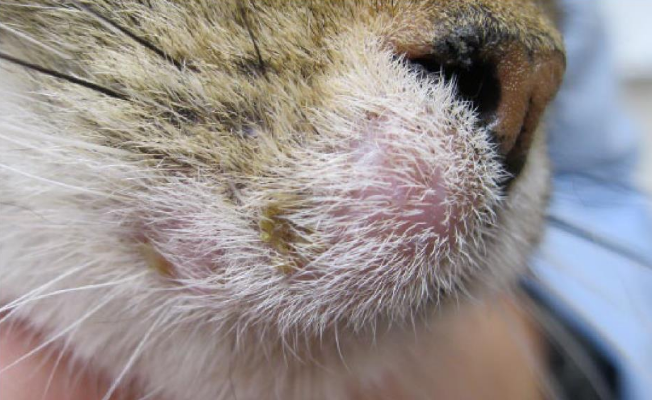
● Ocular SCC: Occurs in the region around the eyes and may result in sight complications.
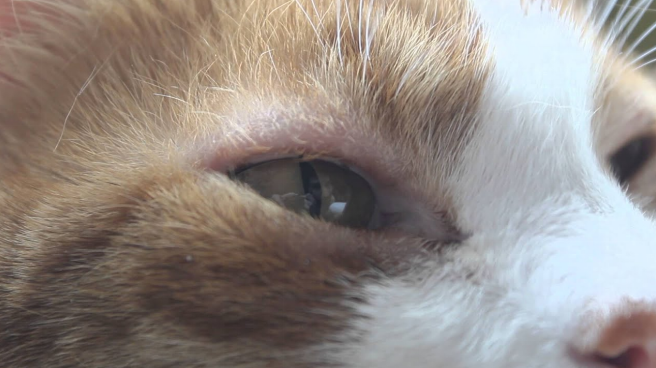
● Nailbed SCC: Rare, and can cause limping or swelling.

Each of the types needs a different treatment plan; this is why the diagnosis is so significant. You can learn more about unusual feline health signs in Cat Losing Weight but Acting Normal.
Although the cause of feline squamous cell carcinoma is not always obvious, there are a number of risk factors that have been identified to contribute to the occurrence of the disease:
Cats, just like humans, can be harmed by UV rays. This is particularly true in white or light-colored cats that have thin fur, as their skin is sensitive to the sun's rays. Excessive sun may cause skin changes and ultimately cancer.
There are breeds of cats that are more genetically inclined to SCC. Some breeds, such as the Siamese and Abyssinian, appear to be more susceptible, perhaps because they are less heavily pigmented or because they are genetically more vulnerable.
Pesticides, lawn chemicals, or cigarette smoke, among others, may expose a person to cancer. These chemicals may deposit on the fur of your cat or be inhaled over a period of time, which may affect the long-term health of your cat.
Wounds, inflammation, or sores that do not heal correctly can raise the risk that the cells become cancerous. Sensitive areas, which are irritated, such as the nose, mouth, or ears, may be more susceptible.
Protecting your cat from unnecessary chemicals is just as important as sunshine. Are Candles Bad for Cats? explores more hidden dangers in your home.
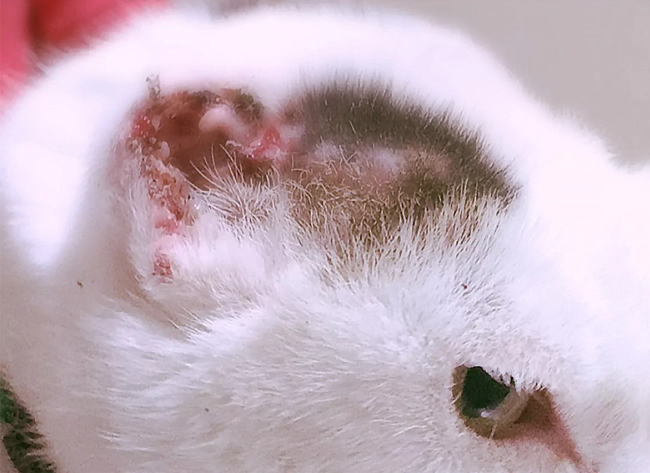
Cats are cunning in expressing pain. However, you know your fur baby the best- so when something is not right, follow your instincts.
This is what to watch out for:
● An ulcer that will not heal
● A bump or lump, particularly on the nose, lips or ears
● Pus or bleeding of a lesion
● Drooling, difficulty eating, or foul breath (in oral SCC)
● Red eyes or squinting eyes (in the case of eye SCC)
● Swelling or limping around the claws
If you see anything unusual, check out this post: Helping Older Cats with Appetite.
Your vet will perform some tests in case they suspect SCC:
● Biopsy: A small piece of tissue makes the diagnosis.
● Imaging (X-rays or scans): To determine whether the cancer has metastasized.
● Bloodwork: To examine the general well-being of your cat before treatment.
The sooner SCC is discovered, the better. This is why checkups are so useful.
Each cat is different, and therefore, the most appropriate treatment would be based on the early detection of the cancer, its location, and the general health of your cat. Your vet will guide you through the options, but some of the most popular ones are the following:
1. Surgical Removal
Surgery is usually the initial treatment if the tumor is small and in an accessible location. The aim is to eliminate the cancer. It might require a short period of recovery and additional attention at home, but a number of cats recover well and resume their usual activities.
2. Radiation Therapy
Radiation can be used to shrink or destroy a tumor when surgery is impossible, possibly due to the location or size of the tumor. It is a non-invasive technique that specifically treats the affected region without incisions.
3. Immunotherapy or chemotherapy
Such therapies are done when the cancer has metastasized or is not responding to the other alternatives. Chemotherapy is used to slow down the growth of the cancer, whereas newer forms of immunotherapy are used by stimulating the immune system of your cat to help kill the cancer cells more naturally.
4. Supportive Care
Regardless of the choice of treatment, supportive care is necessary. This involves controlling the pain of your cat, enhancing their appetite, and keeping them comfortable. It can help a lot to make the environment comfortable and stress-free. To get some useful suggestions, check these tips on how to make a Stress-Free Cat Home.
Prognosis varies. Cats who get diagnosed early—and have smaller tumors—tend to do much better than those with more advanced cancer. For example, skin SCC on the paw has a better survival rate than one in the mouth.
Even if a cure isn’t possible, treatment can still give your cat a good quality of life.
For tips on how to keep cats comfortable long-term, see Living with a Disabled Cat.
In case your cat is diagnosed, your affection and treatment are more important than ever. These are some of the ways you can assist them:
● Provide them with a peaceful, comfortable place to sleep.
● Have food and water readily available.
● Be in control of pain
● Take your vet regularly
● Give plenty of love and affection.
Cats tend to conceal pain, and it is important to monitor their behavior. WOpet Pet Camera Feeder can make a real difference. You can feed your cat remotely, monitor them in real time with a built-in HD camera, and even talk to them to provide comfort. When you notice changes, do not hesitate, visit your vet. Why Is My Cat Sleeping All Day? may provide some answers to changing schedules.

Alt text: Wopet WiFi Automatic Cat Feeder With Camera
While you can’t always stop SCC from developing, you can reduce the chances by being proactive:
● Keep cats indoors during peak sunlight hours.
● Use pet-safe sunscreen on vulnerable areas like ears or noses.
● Avoid exposure to cigarette smoke and harsh chemicals.
● Stick to a healthy, balanced diet.
● Schedule regular vet checkups.
For more ideas on creating a healthy environment, check out Creating a Healthy Home Environment.
Helping a cat heal from SCC treatment involves both physical and emotional support. Some tips include:
● Soft bedding and minimal noise to keep your cat calm.
● Feeding high-protein meals to support healing.
● Using a cone to prevent scratching or licking wounds.
● Giving prescribed meds as scheduled.
And don’t forget mental stimulation! Gentle play or window-watching can lift your cat’s spirits.
Feline squamous cell carcinoma is serious, but it doesn’t have to be a sudden tragedy. The best thing you can do is stay informed, take action early, and offer comfort and love to your cat every step of the way.
With today’s treatment options and a supportive home, many cats live longer, happier lives after diagnosis. Stay , stay hopeful, and trust that you’re doing right by your beloved feline.
Label:
Popular Post

What to Feed a Sick Dog With No Appetite? [2025 Guide]
May 16, 2023

Troubleshooting Common Issues with Automatic Pet Feeders: Tips & Tricks for Pet Owners
Oct 26, 2023

What is a standard Cat Weight chart by age Kg?
Mar 19, 2025

Why Does My Cat Cough After Drinking Water? 8 Potential Reasons
Mar 13, 2023

Why is My Cat Throwing up Water? Top 5 Causes Here
Feb 08, 2023
$109.99
$129.99
Copyright © 2025 WOPET. All Rights Reserved.